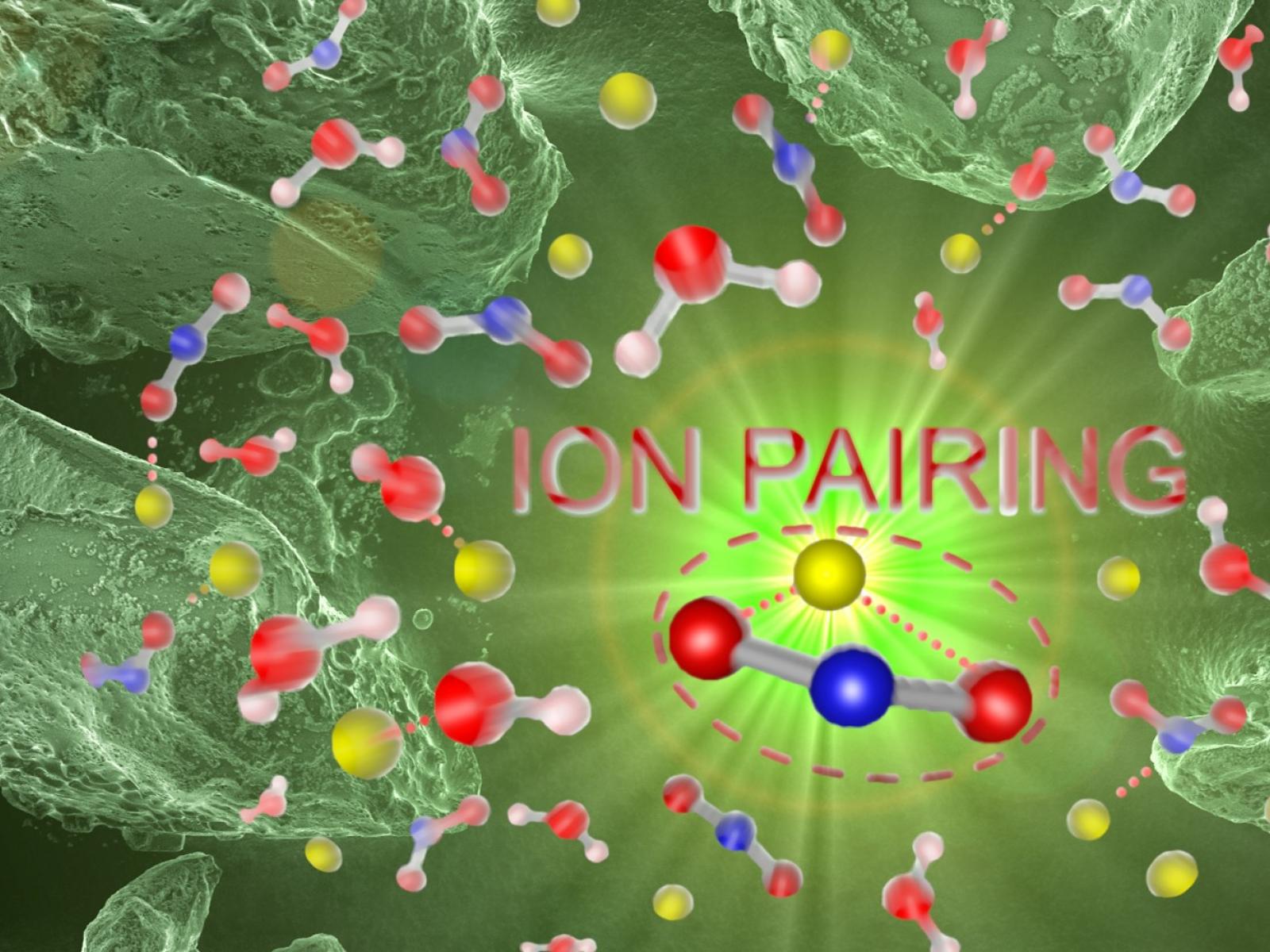Ion Pairing of Nitrite in Caustic Multicomponent Electrolytes
High concentrations of sodium hydroxide significantly impact the molecular and macroscale properties of sodium nitrite solutions

Dissolving sodium hydroxide decreases the solubility of sodium nitrite in highly concentrated solutions.
(Image by Trent Graham | Pacific Northwest National Laboratory)
The Science
Nitrite is a prevalent nitrogen oxyanion in industrial and environmental processes. The interactions of nitrite with other dissolved salts solutions, called electrolytes, are important to understand in order to predict and control the behavior of complex solution mixtures. This work describes the solubility and spectroscopy of sodium nitrite in concentrated, water-based solutions of sodium hydroxide. Dissolving sodium hydroxide in solutions of sodium nitrite reduced the solubility of the sodium nitrite. It also decreased the diffusive mobility of ions and water in the solutions.
The Impact
Many industrial and environmental processes occur in multicomponent electrolyte solutions. Studying their properties provides insight into the fundamental behavior of ions in water and reduces the technical risks in industries that produce extremely basic solutions. For example, this fundamental work can help produce predictive models that enhance scientific knowledge of nitrite- and hydroxide-bearing electrolytes. Those models are particularly important for processing radioactive waste. Developing a better understanding of the solvation environments, solution dynamics, and phase stabilities of concentrated electrolytes is of broad interest for researchers specializing in chemical separations, the design of ionic liquids, and the study of corrosion.
Summary
This study detailed the solubility and spectroscopy of sodium nitrite in concentrated aqueous solutions of sodium hydroxide. Researchers employed a wide range of techniques to measure the solution’s physical properties using unique capabilities available at the Department of Energy’s Office of Science user facilities at the Advanced Photon Source at Argonne National Laboratory and the Environmental Molecular Sciences Laboratory at Pacific Northwest National Laboratory. Studies on sodium nitrite have direct impacts on the treatment of nuclear waste given its presence within waste constituents.
PNNL Contact
Carolyn Pearce, Pacific Northwest National Laboratory, carolyn.pearce@pnnl.gov
Trent R. Graham, Pacific Northwest National Laboratory, trenton.graham@pnnl.gov
Funding
This research was supported by IDREAM (Interfacial Dynamics in Radioactive Environments and Materials), an Energy Frontier Research Center funded by the Department of Energy, Office of Science, Basic Energy Sciences. The solubility experiments were conducted in support of the River Protection Project (RPP) Integrated Flowsheet group to identify and close flowsheet model and operations gaps and realize opportunities to reduce the waste treatment mission cost, schedule, and technical risk, funded by Washington River Protection Solutions. Additional experiments were performed using facilities at EMSL, the Environmental Molecular Science Laboratory, a DOE Office of Science user facility at Pacific Northwest National Laboratory.
Published: April 21, 2022
Graham T.R., M. Dembowski, H. Wang, S.T. Mergelsberg, E.T. Nienhuis-Marcial, J.G. Reynolds, and C.H. Delegard, et al. 2021. "Hydroxide promotes ion pairing in the NaNO2-NaOH-H2O system." Physical Chemistry Chemical Physics, 23, no. 1:112-122. [DOI: 10.1039/D0CP04799F]